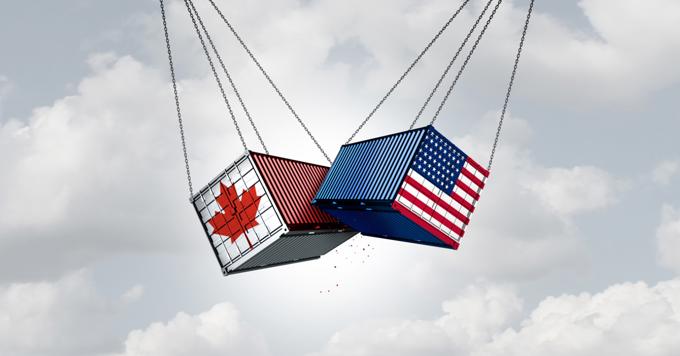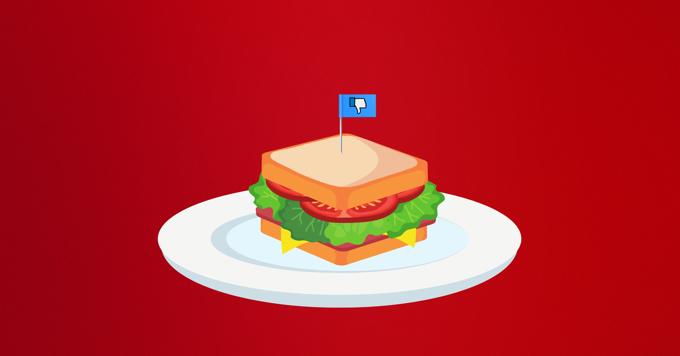Canadian farmers are no strangers to weathering storms. From droughts to wildfires to infestations, they have long adapted to forces beyond their control. But today they face a different kind of volatility – one not in the soil, but in the shifting lines of global power.
Caught between looming U.S. tariffs and Chinese retaliation, Canada’s agriculture sector faces a gathering storm that old practices can’t withstand. What’s needed instead are diplomacy, diversification, and long-term planning – the pillars of a new policy brief from Ivey’s Lawrence National Centre for Policy & Management, Harvesting Uncertainty: Building Resilience Against U.S. Tariffs and Global Market Disruption.
Written by Ramsey Andary, MBA ’23, under the guidance of Lawrence Centre Director and Assistant Professor, Romel Mostafa, the brief explores how U.S. tariffs and Chinese retaliation threaten Canada’s agriculture sector – most notably in grain and oilseed – and outlines a three-pronged policy strategy for resilience.
Cracks in the field
When the U.S. announced plans for new tariffs on Canadian goods in early 2025, industries across the country braced for impact. For the grain and oilseed producers, already stretched thin, it was another heavy blow.
“Canada’s crop sector had already seen its profit margins squeezed,” said Romel Mostafa. “Falling commodity prices, rising input costs, and high interest rates have left farmers struggling just to stay afloat in the past couple of years.”
Labour shortages, interprovincial trade barriers, and slow adoption of agriculture technology only compounded the strain. Now, potential tariffs from the U.S. could shut farmers out of this major export market, while Chinese retaliation has already hit canola and related products in response to Ottawa’s alignment with Washington.
These pressures weigh on the broader agricultural sector that contributes more than $150 billion to Canada’s GDP and supports one in nine jobs.
“Agriculture underpins Canada’s economy. When it comes under pressure, so does our food security, our jobs, and our growth,” said Mostafa.
The domino effect
The Trump administration hasn’t yet targeted Canadian farm products with tariffs – but the threat of an all-out trade war looms. This brief considers that scenario: if sweeping tariffs and counter-tariffs were unleashed, the shockwaves would extend far beyond the fields. That’s what makes its recommendations not just timely, but essential.
“A U.S. tariff on Canadian crops – part of an export market worth about $30 billion annually in grains and oilseeds – would immediately cut into revenues,” said Mostafa.
With Canada already producing more wheat, canola, and pulses than it consumes, tariffs would leave farmers with oversupply and falling prices as U.S. buyers look elsewhere. At the same time, Canada’s counter-tariffs would make key farm inputs like machinery and seed more expensive – leaving farmers further squeezed by falling revenues and rising costs.
What’s further, this strain wouldn’t stop at the farm gate. Food processors and exporters dependent on U.S. markets would also be forced to scale back, while transportation and logistics firms tied to agricultural trade would be pulled into the fallout.
“Put simply, tariffs and counter-tariffs would set off a domino effect, where farm incomes erode, rural communities weaken, and a cornerstone of Canada’s economy is put at risk,” said Mostafa.
Steadying the chain
If tariffs are the falling dominoes, policy is how Canada steadies the chain.
To steady this vulnerable sector, the Lawrence Centre brief proposes three pillars of resilience: stronger diplomacy, broader trade, and deeper investment in competitiveness.
1. Diplomacy
Canada must work with provincial governments, industry associations, and – critically – U.S. stakeholders who influence the Trump administration. The goal is to highlight the mutual benefits of integrated supply chains, food security, and affordability, while making clear the potential costs to Americans if those ties are disrupted.
“The U.S. relies on Canada for stable, affordable food supply chains just as much as Canada relies on the U.S. market,” said Mostafa. “Diplomacy must make that interdependence impossible to ignore.”
2. Diversification
Nearly 70 per cent of Canada’s grain and oilseed exports flow to just two markets – the U.S. and China – leaving farmers dangerously exposed to shifts in global trade. To mitigate this vulnerability, Canada needs to deepen access in the Indo-Pacific, EU, and Middle East through targeted marketing, removal of non-tariff barriers, and benchmarking against top competitors.
“Diversification cannot just mean signing new agreements,” explained Mostafa. “It means doing the hard work of building presence in large markets where Canada’s share is still under 5 per cent.”
Diversification and amplification matter, but so does pragmatism. The brief warns that without a clear framework Canada risks being pulled deeper into the crossfire between the U.S. and China. Preserving ties with the U.S. while avoiding escalation with China is the delicate balance that will help Canadian crop farmers out of this geopolitical storm.
3. Competitiveness
Competitiveness is Canada’s long game – and it requires investment, innovation, and people. Removing interprovincial trade barriers and investing in ports and rail will strengthen the flow of agricultural products across Canada and beyond.
But infrastructure isn’t just physical. Governments must also bridge the digital divide that holds rural producers back. While 78 per cent of rural homes and businesses had access to high-speed internet as of February 2025, actual access on farms is significantly lower, leaving many producers disconnected until at least 2030.
Reliable internet is essential for modern farming, not only to enable precision machinery and farm management software, but also to provide access to online market markets, up-to-date weather forecasts, and the tools producers need to innovate.
Competitiveness also depends on people. With an aging farm population, Canada needs a succession strategy that combines ownership models with targeted immigration pathways – supporting new farmers, experienced migrant workers, and students – to encourage and enable the next generation to build careers in the field.
Weathering what comes next
Canada’s grain and oilseed sector stands at a crossroads. The pressures of tariffs and retaliation are urgent, but they also reveal how dependent the sector has become on a narrow set of markets and burdened by internal structural challenges.
Though this brief centers on the crop sector, its warning reaches further. In a world where trade is increasingly wielded as a weapon, complacency is no longer an option.
Mostafa explained: “Recent shifts in U.S. policy have exposed the fragility of Canada’s crop sector like never before making bold action on trade, diversification, and competitiveness now essential.”
Reap the full insights of Harvesting Uncertainty: Building Resilience Against U.S. Tariffs and Global Market Disruption by viewing the full report on the Lawrence Centre website.










